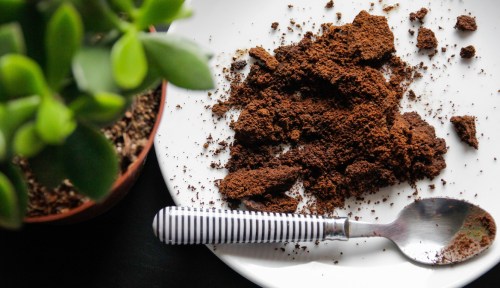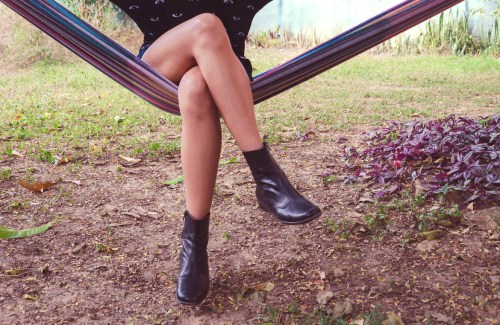For a lot of people, coffee is the go-to when they need a bit of a pick-me-up, but it can actually make some plants perk up, too. (Give ’em a page in Us Weekly because, plants, they’re just like us!) Emphasis on some plants though, which is why it’s key to know which species like coffee grounds—and which ones don’t—before trying to use coffee grounds in plants.
Experts in This Article
former director of brand marketing at The Sill
“I’ve definitely been asked more about what plants like coffee grounds now that people are spending more time at home, making their own coffee instead of picking it up on their way to work,” says Erin Marino, the director of marketing at NYC-based plant company, The Sill. “More people are thinking of creative ways to put food waste to good use and coffee grounds can make a great addition to your fertilizer,” she says.
Still, Marino says there are definitely some rules to keep in mind when using coffee grounds as fertilizer. Here, she shares everything you need to know.
Why some people have success with using coffee grounds for their plants and others don’t
Often, Marino says, people have mixed success with using coffee grounds for their plants, which she says could be due to the type of coffee grounds being used. “You’ll read on the Internet that a certain plant does really well with coffee grounds and then try it and it doesn’t work for you. That’s because people are using different types of grounds,” she says. “Because of this, it’s very hard to know exactly what plants will thrive with coffee grounds and which ones won’t.”
To her point, there are two broad types of coffee grounds: fresh and used. Fresh coffee grounds are ground-up coffee beans that haven’t yet been used to make coffee. Used coffee grounds are the leftover remnants from making your brew. Marino says typically only the latter is beneficial in fertilizer; she doesn’t recommend using fresh coffee grounds because they’re too acidic for most plants to handle.
“While there are a few plants that may benefit from some extra acidity in their soil, like hydrangeas, the vast majority of plants are not going to benefit from that,” Marino says. “Used coffee grounds don’t have much acidity left at all, which is why those are better to use.”
While used coffee grounds lose their acidity through the coffee-making process, they don’t lose their beneficial nutrients. “Nitrogen and potassium are two huge nutrients in used coffee grounds,” Marino says. “These are nutrients that are typically added to fertilizer, but here they are for free right in your grounds.”
Marino emphasizes that using coffee grounds to help plants certainly isn’t some sort of trade secret in the plant world; sometimes it’s helpful, and sometimes it’s not. “It’s not something I would suggest someone start doing as ‘the’ thing that’s going to help their plants. But if you want to try it as a way to be sustainable and cut down on food waste, then it’s great to try,” she says.
Plants that like coffee grounds—and plants that don’t
Because using coffee grounds to help plants grow is so hit or miss and has such a wide range of success, Marino is hesitant to deem some plants as “the” ones that it works for and some that it doesn’t. “The evidence out there is really inconclusive,” she says. “Instead, I would encourage people to slowly test for themselves.”
However, she does offer up this tip on how used coffee grounds affect moisture: “Adding coffee grounds to fertilizer makes the soil hold and retain water better, which is going to be beneficial for some plants, but not for others,” she says.
With moisture as a key factor in mind, use the below lists as a loose guide for what plants to experiment with, and which ones to avoid using coffee grounds with. (TIP: If you’re unsure of what type of plant you own, you can use a plant identification app to find out.)
Moisture-loving plants to experiment with coffee grounds:
- Bugbane
- Calla
- Crinum
- Elephant Ear
- Forget-Me-Not
- Hibiscus
- Iris
- Lily of the valley
- Marigold
- Meadowsweet
- Sedge
Dry-soil plants that will not thrive with coffee grounds:
- Black-eyed Susan
- Century plant
- Lavender
- Madagascar periwinkle
- Orchids
- Pothos
- Rosemary
- Sago palm
- Spider plant
- Snake plant
- Succulents and cactus
- Tomatoes
- Yucca
How to use coffee grounds to nourish your plants
The last piece of the puzzle is knowing how exactly to use your coffee grounds in the plants. Marino says that the number-one mistake people make when using coffee grounds with plants is just using too much. “The added nitrogen and potassium in the coffee grounds is good in moderation only,” she says. “You really want to dilute it and use it sparingly.”
“The best way to use coffee grounds in plants is adding them to your compost pile, and then mixing a little bit of that compost in with your potting soil,” Marino says. Diluting coffee grounds works the same way as diluting fertilizer: using just a teaspoon of coffee grounds per gallon of water. Marino recommends using a small container to do this, and then stirring the mixture with a spoon until it’s fully diluted. “Do this for a couple nights, and then run the mixture through water using a cheesecloth or strainer,” she says.
Marino says another reason why it’s smart to use just a small amount of the grounds per plant is that it allows you to see how the plant is responding to it. “It’s like a little baby step,” she says. “If it seems to really be helping your plant thrive, you can add more coffee grounds. But if it seems to be doing more harm than good, you’ll know to cut back.”
Besides being used as fertilizer, used coffee grounds can also be used in mulch. In fact, some people say that mixing coffee grounds in with your mulch can help keep slugs away since coffee is toxic to slugs. Additionally, there’s some evidence that coffee grounds attract earthworms, which help mix organic matter into the soil better, therefore improving soil health and water infiltration.
Whether you’re using coffee grounds as fertilizer or mulch, Marino says you still want to keep in mind seasonal changes, just as you would with traditional fertilizer. “Just like we fertilize with store-bought fertilizer in spring and summer, during the growing seasons, this is going to be the best time to use coffee grounds in your fertilizer as well,” she says. “I recommend only using them during this time period and skipping the winter months when plants are semi-dormant.”
If you have cats, Marino says using a little bit of coffee grounds on your plants (from the list of ones that like them) can have an added benefit: It may deter your pets from eating your plant babies. “I’ve heard anecdotally from several people that coffee grounds really help keep their cats away from their plants,” she says.
Clearly, using coffee grounds to help your plants grow is tricky business, and it’s certainly no guarantee. But if you’re trying to live your best, sustainable life, it can be a great way to cut down on waste. Just stick to the plants on the list, start slowly, and see how it goes. You might not be the only coffee lover in your house.
Sign Up for Our Daily Newsletter
Get all the latest in wellness, trends, food, fitness, beauty, and more delivered right to your inbox.
Got it, you've been added to our email list.











